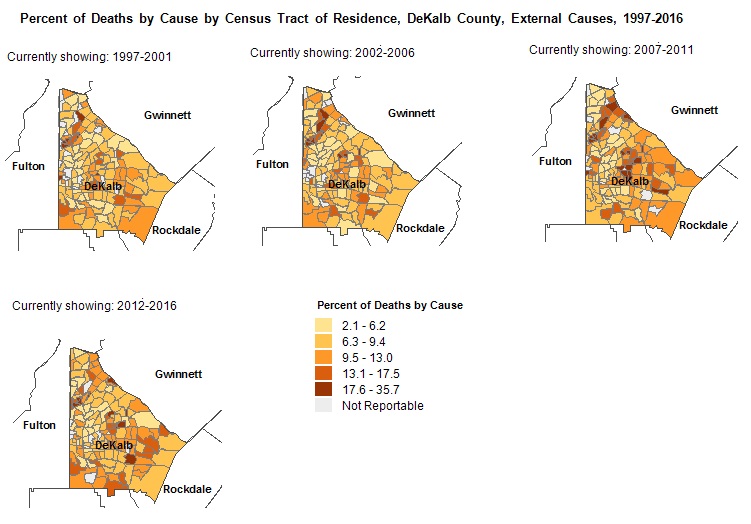

| AMBULATORY CARE SENSITIVE CONDITIONS | |
|---|---|
| PREVENTABLE CONDITION ICD10 codes followed by ICD-9-CM codes in brackets. (By Primary Diagnosis Unless Otherwise Noted, Secondary diagnoses are all other available diagnosis) |
COMMENTS |
| AVOIDABLE ILLNESSES | |
| Congenital Syphilis A50 [090] | Secondary diagnosis for newborns only |
| Failure to thrive R62.51, R62.52, R62.0, R62.50 [783.41] | Age < 1 Year |
| Dental Conditions K02, K03, K04, K05, K06.0, K06.1, K06.2, K08, K12, K13, M27.6, A69.0, K09.8 [521-523,525,528] | |
| Vaccine Preventable Conditions/Immunization-related and preventable conditions A33, A34, A35, A37, A80, G00.0, I01 [032,033,037,041.5,045,052.1,052.9,055-056,070.0-070.3,072, 320.2*, 320.3,390,391,771.0] | *Hemophilus meningitis G00.2 [320.2] for ages 1-5 only |
| Iron Deficiency Anemia D50.1, D50.8, D50.9 [280.1,280.8,280.9] | Age 0-5 only. Primary & Secondary Diagnoses |
| Nutritional Deficiencies E40, E41, E43, E55.0, E64.3 [260-262,268.0,268.1] | Primary & Secondary Diagnoses |
| ACUTE CONDITIONS | |
| Bacterial Pneumonia J13, J14, J153, J154, J157, J159, J16, J18 [481,482.2,482.3,482.9,483,485,486] | Exclude case with secondary diagnosis of sickle cell D57 and patients < 2 months |
| Cancer of the Cervix [180.0-180.1, 180.8-180.9] | No Longer an ACSC in ICD10 |
| Cellulitis L03, L04, L08, L88, L98.0 [681,682,683,686] | Excludes cases with a surgical procedure starting with 0 or 1, [01-86.99], except incision of skin and subcutaneous tissue 0H, 0J, 0W, OX, [86.0] where it is the only listed surgical procedure |
| Convulsions R56 [780.3] | |
| Dehydration - Volume Depletion E86 [276.5] | Primary & Secondary Diagnoses examined separately |
| Gastroenteritis K52.9, K52.89 [558.9] | |
| Hypoglycemia E16.2 [251.2] | |
| Kidney/Urinary Infection N10, N11, N12 [590.0,599.0,599.9] | |
| Pelvic Inflammatory Disease N70, N73 [614] | Exclude cases with a surgical procedure of hysterectomy 0UT |
| Severe Ear, Nose, & Throat Infections H66, J02, J03, J06, J31.2 [382*,462,463,465,472.1] | *Excludes otitis media H66, H67 [382] cases with myringotomy with insertion of tube C83.5 [20.01]1 |
| Skin Grafts with Cellulitis {DRGs: 263 & 264} For 2008: {DRGs: 573, 574, 575} | Excludes admissions from SNF/ICF |
| CHRONIC CONDITIONS | |
| Angina I20, I24.0, I24.8, I24.9 [411.1,411.8,413] | Excludes cases with a surgical procedure 0 or 1 [01-86.99]1 |
| Asthma J45 [493] | |
| Chronic Obstructive Pulmonary Disease J20, J40, J41, J42, J43, J44, J47 [466.0*,491,492,494,496] | *Includes acute bronchitis J20.9 [466.0] only with secondary diagnosis of J41, J42, J43, J44, J47 [491,492,494,496] |
| Congestive Heart Failure I50, I11.0, J81.0 [402.01,402.11,402.91,428,518.4] | Excludes cases with the following surgical procedures: 02 [36.01,36.02,36.05,36.1,37.5 or 37.7]1 |
| Diabetes with ketoacidosis or hyperosmolar coma or other coma E10.1, E13.1, E11.0, E13.0, E10.641, E11.641 [250.1-250.33] | |
| Diabetes with other specified or unspecified complications E10.6, E11.6, E10.8, E11.8 [250.8-250.93] | |
| Diabetes mellitus without mention of complications or unspecified hypoglycemia E10.9, E11.9 [250-250.04] | |
| Grand Mal & Other Epileptic Conditions G40 [345] | |
| Hypertension I10, I11.9 [401.0,401.9,402.00,402.10,402.90] | Excludes cases with the following procedures: 02 [36.01,36.02,36.05,36.1,37.5 or 37.7] |
| Tuberculosis (Non-Pulmonary) A15.4, A15.6, A15.8, A17, A18, A19 [012-018] | |
| Pulmonary Tuberculosis A15.0, A15.5, A15.9 [011] | |
1 – Procedure codes: For ICD9, not all records used ICD9 procedure codes.
Please note: Some records may have more than one ACSC, in which case the first discovered is reported.
Note: Rates for years prior to year 2000 use population estimates for the denominator that adhere to a different Federal standard for race: White, Black, Asian or Other Pacific Islander, American Indian and Alaska Native. So, unlike years 2000 and after, Multiracial is not included. Also, Asian by itself is not available because it was grouped with Pacific Islander (After 1999 Asian is separate from Native Hawaiian or Other Pacific Islander).
Rates using Census Population Estimates in the denominator are not calculated when a selected race is not available in the denominator, or zero.
Nevertheless, selections available in OASIS' Race query box reflect the 1997 Race classifications described above. Most of the numerators used in indicators in Oasis *do* have the year 2000 race selections. Therefore, selections of multiple years that span <2000 and 2000+ will return a *number (count)* for all race selections, but the *rates* may be limited by the change in racial classifications the federal government used as noted above. In these cases you will see NA1 in the output cell (NA1 therefore by definition will only show up in rates for the years before 2000).
In some cases, the numerator's race classification may be more precise, or up to date, than the Census population estimate counterpart used in the denominator. You may find that there are a number of births of a given race for a county/age-group selection, but no count of population estimated for the denominator. In such cases where the race selection was available for both the numerator and the denominator, but the denominator's estimate was zero, you will see a NA2. If the numerator was greater than the denominator, but the denominator was > 0, you will see a NA3 returned.
| Zoom | Use scroll wheel; or Shift+click and drag mouse to draw zoom area; or use + - buttons. |

|
Full Extent: Select this button to see the entire map. |
| Pan | Click and hold mouse. |
| Print Map: Click on this button to get a printable copy of the map in PNG format as it appears at the moment. Disable any pop-up blockers. Right click on the preview and you can choose to save, copy or print the preview. The preview can also be dragged and dropped to a folder or desktop. |
V1.20 (7/29/2025)